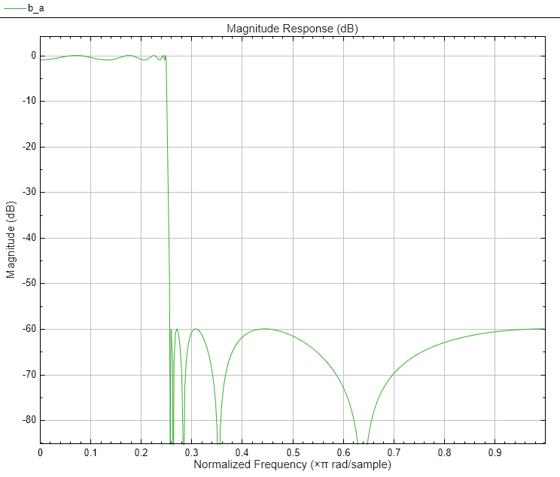sos2ctf
Convert digital filter second-order section parameters to cascaded transfer function form
Since R2024a
Description
[
computes the second-order Cascaded Transfer Functions (CTF) of a filter system described by the second-order section matrix
B,A] = sos2ctf(sos)sos.
Examples
Input Arguments
Output Arguments
More About
Algorithms
The sos2ctf function computes the numerator and denominator
coefficients of the cascaded-transfer-function sections from the second-order-section
coefficients of the filter system.
The output arguments B and A contain the
second-order cascaded transfer function coefficients of the filter system distributed in
L rows.
Each row of
AandBlists the coefficients in each section.The
sos2ctffunction returns the L-by-3 matricesBandA, where the last two columns correspond to the z–1 and z–2 terms for each cascaded section of the filter system.
For a second-order-section matrix sos, and unity scale value
(g=1), the values for B and A are
these:
B = sos(:,1:3); A = sos(:,4:6);
If you specify g, sos2ctf distributes the
scale values from g across the numerator coefficients, so that the values
for B and A are
these:
B = scaleFilterSections(sos(:,1:3),g); A = sos(:,4:6);
References
[1] Lyons, Richard G. Understanding Digital Signal Processing. Upper Saddle River, NJ: Prentice Hall, 2004.
Extended Capabilities
Version History
Introduced in R2024a
See Also
filterAnalyzer | scaleFilterSections | sos2cell | sos2ss | sos2tf | sos2zp | zp2ctf | zp2sos
